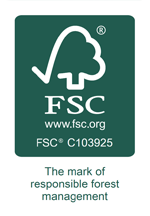Embossing is a term used to describe text or images that have been raised, usually by applying heat and pressure. The technique has been around for hundreds of years, with its use dating back to ancient Greece when embossed letters were carved into coins. Today, embossing is still used on coins as well as other products such as stationery and packaging—and it’s become more popular than ever!
What Is Embossing?
Embossing is a printing process that produces a raised image on a printed piece. It’s used to create a raised design on a printed piece, as well as add texture to the paper.
Benefits of Embossing
One of the most popular methods for adding a tactile element to your printed piece is embossing. This method allows you to create textural designs that add a three-dimensional effect to your printed piece, making it more interesting for your reader. You can also use embossing to create raised designs, which can further make your printed piece stand out from the rest of its kind.
What Can Be Embossed?
You can emboss paper, plastic, metal and leather. You can use embossing to create decorative text on a variety of substrates. Embossed text has been popular for years as wedding invitations and greeting cards, but it has also been used to design logos, business cards and other promotional materials.
Embossing creates an impression in the surface of your substrate that is raised above the rest of the surface area. You can make this impression by using a die or mold pressed against your substrate while it’s heated up to about 350 degrees Fahrenheit (or higher depending on what material you’re using). The result is a pattern or image that looks similar to an ink stamp but appears raised rather than flat on your substrate.
It’s possible to add color onto an embossed pattern by adding ink before pressing down with your dies/molds or after pressing down with them (by wiping off extra ink from around where you want it). Ink applied before pressing will absorb into any tiny holes created by stamping out designs; this may look better if there are many small details within your design because those areas get filled in completely with color—but since there aren’t any openings left behind in which air could escape during heating up/cooling down cycles (as would happen if no ink had been applied), there’s less risk of cracking occurring during this process!
Types of Embossing
Embossing is a form of printing, but there are two types.
The first is called debossing and it creates a recessed image that’s slightly below the surface of the paper. This can be done with either a press or by hand. The second type is called blind embossing and it results in an image that looks raised above the surface of the paper. This type can only be made by pressing because it requires heat to set into place and cannot be done by hand stamping or printing on top of an existing design.
Embossing Equipment
Embossing machines are available in a variety of sizes and shapes. You can find them with different embossing depths, which will determine the depth of your embossed image. The speed at which the machine operates is also important to consider, as it affects how long it takes for your item to be finished. Some embossing machines offer extra features like interchangeable dies and customization options, so you should carefully choose one that fits your needs.
The most common type of embossing machine is known as a tabletop model because they’re fairly small, lightweight and portable—ideal if you only need to emboss an occasional item or two per week. Larger models are also available if you need something more heavy-duty but still easy enough for anyone to use (like at home). These can handle higher volumes of work but may need some maintenance over time due to frequent use; however this isn’t necessarily a bad thing since it ensures better performance overall!
A Brief History of Embossing
The history of embossing is an interesting one. This technique has been used for thousands of years and was used in many different areas of life, including the jewelry industry and packaging. Today, embossing is still a popular method of decoration in many industries including the marketing industry. The word “emboss” comes from the Latin word “embozzare,” which means to impress or stamp into metal or clay.
Whether you want to make text pop, add a raised design to an elegant invitation, or add tactile detail to a product package, embossing can be the ideal solution.
Embossing is a printing process that creates a raised or recessed design in paper, card or other materials. The raised areas of the material can be textured, whereas the recessed areas are usually smooth. The result is a surface with added texture and dimension.
Embossed effects can be used to add visual interest to invitations, business cards and brochures as well as packaging for products such as cosmetics and perfume bottles. The embossed effect can be created by applying pressure during printing (called blind embossing) or by using ink that reacts chemically with heat (called thermography).
We hope this article has helped you understand the basics of embossing. Embossing is a great way to add an extra touch of elegance, style and detail to your products. It’s also an easy way to make your text pop off the page for maximum impact. So if you’re looking for an affordable way to make your business stand out from competitors or simply want more options when designing invitations, consider using embossing!


